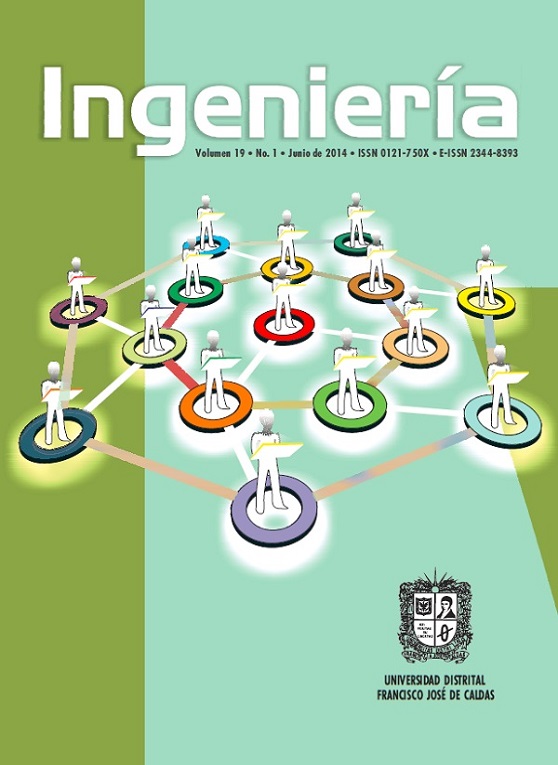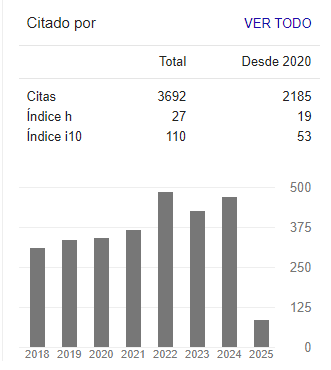DOI:
https://doi.org/10.14483/udistrital.jour.reving.2014.1.a03Published:
2014-06-24Issue:
Vol. 19 No. 1 (2014): January - JuneSection:
ArticleHacia una Propuesta de Mecanismos para la Autenticidad de Objetos de Aprendizaje en Plataformas LCMS
Mechanisms for Authenticity of Learning Objects in Learning Content Management Systems Platforms: Issues and Proposals
Keywords:
digital certificates, information security, learning content management system, public key infrastructure (en).Keywords:
certificados digitales, firmas digitales, infraestructura de clave pública, LCMS, seguridad de la información (es).Downloads
Abstract (es)
Los actuales mecanismos de seguridad dentro de una plataforma Learning Content Management Systems (LCMS), carecen de principios para llevar a cabo procesos de confidencialidad, integridad y privacidad de contenidos. Específicamente, la autenticidad de contenidos, es uno de los temas que dentro del área de seguridad informática requiere el establecimiento de una serie de normas y procesos para la veracidad de la información en cualquier entorno de trabajo. Por lo tanto, el presente artículo presenta una propuesta para el desarrollo de un mecanismo de seguridad informático, que permita suplir algunas de estas necesidades en el área académico; además, de incrementar la seguridad de los LCMS usando el concepto de Firmas Digitales bajo una Infraestructura PKI (Public Key Infraestructure). El planteamiento contempla convertir entidades educativas, en un gestor de Certificados Digitales o autoridad de certificación. El objetivo es ofrecer una herramienta informática que permita administrar certificados digitales de usuarios dentro de una plataforma, y facilitar el funcionamiento del mecanismo de seguridad para validar la autenticidad de los contenidos o recursos digitales dentro de una plataforma LCMSAbstract (en)
The current security mechanisms of Learning Content Management Systems
(LCMS) platforms, do not contemplate aspects related to confi dentiality,
integrity and privacy of contents in learning objects. In particular, the authenticity of content is one of the topics in the fi eld of information security that requires principles and processes to carry out the veracity of information in any collaborative work environment. Within this context, this paper presents a proposal for the definition of a computer security mechanism to improve protection levels of LCMS platforms, through the concept of digital signatures and PKI (Public Key Infrastructure).
The approach considers the defi nition of aspects so that educational institutions can improve
the digital certifi cate management or become a certifi cation authority. The goal is
to provide a set of guidelines and considerations for the management and integration of
digital certifi cates, in order to facilitate the operation of a security mechanism to validate
the authenticity of digital resources within a LCMS platform.
References
S. Muriel "Las TIC y la identificación personal: el DNI electrónico," Física y sociedad, p. 28, 2009.
L. Greenberg, "LMS and LCMS: What's the Difference," Learning Circuits, vol. 31, 2002.
K. Harman and A. Koohang, Learning objects: standards, metadata, repositories, and LCMS: Informing Science, 2007.
S. Irlbeck and J. Mowat, "Learning content management system (LCMS)," Learning Objects: standards, metadatas, repositories, and LCMS, 2007.
D. C. Luminita, "Information security in E-learning Platforms," Procedia-Social and Behavioral Sciences, vol. 15, pp. 2689-2693, 2011.
S. Kumar and K. Dutta, "Investigation on security in LMS moodle," International Journal of Information Technology and Knowledge Management, vol. 4, pp. 233-238, 2011.
L. M. R. Moreno, "La seguridad informática en el trabajo con la plataforma" Moodle"," Revista de humanidades, pp. 169-190, 2010.
P. Gaona, et al., "Plataforma de seguridad basado en autenticidad de contenidos sobre conjunto de especificaciones SCORM," Revista Ingeniería y Competitividad, vol. 12, pp. 51-68, 2011.
P. Gaona, et al., "Trust Levels Definition On Virtual Learning Platforms Through Semantic Languages," International Journal of Interactive Multimedia and Artificial Intelligence, vol. 1, 2010.
D. Castañeda, et al., "Análisis de Reportes de Seguridad Sobre Plataformas LCMS de Tipo Open Source Aplicando Minería de Datos," in LACCEI - Latin American and Caribbean Consortium of Engineering Institutions, Peru, 2010.
J. Carracedo Gallardo, "Seguridad en redes Telemáticas," Editorial: Mc Graw Hill, 2004.
W. Mao, "Modern Cryptography," in In In Selected Areas in Cryptography VIII, 2001.
A. Shamir, "On the generation of cryptographically strong pseudorandom sequences," ACM Transactions on Computer Systems (TOCS), vol. 1, pp. 38-44, 1983.
S. Halevi and H. Krawczyk, "Public-key cryptography and password protocols," ACM Transactions on Information and System Security (TISSEC), vol. 2, pp. 230-268, 1999.
J. L. G. Pardo, "Private-Key Encryption," in Introduction to Cryptography with Maple, ed: Springer, pp. 131-179, 2013.
F. L. Hernandéz. Seguridad, criptografía y comercio electrónico con Java, 2007.
C. García Figuerola Paniagua, et al., "Preservación digital," Ibersid: revista de sistemas de información y documentación, vol. 3, pp. 265-274, 2009.
R. Canetti and H. Krawczyk, "Universally composable notions of key exchange and secure channels," in Advances in Cryptology—EUROCRYPT 2002, 2002, pp. 337-351.
MNet, "The Moodle network feature. Disponible en: http://docs.moodle.org/25/en/MNet, última consulta (Diciembre 10 de 2013)," 2013.
Mazumdar and Subrata, "Key Manager Tool – Extension of Mozilla Certificate Manager for Key Generation and Certificate Enrollment," Avaya Labs Research, 2006.
How to Cite
APA
ACM
ACS
ABNT
Chicago
Harvard
IEEE
MLA
Turabian
Vancouver
Download Citation
License
From the edition of the V23N3 of year 2018 forward, the Creative Commons License "Attribution-Non-Commercial - No Derivative Works " is changed to the following:
Attribution - Non-Commercial - Share the same: this license allows others to distribute, remix, retouch, and create from your work in a non-commercial way, as long as they give you credit and license their new creations under the same conditions.






2.jpg)










